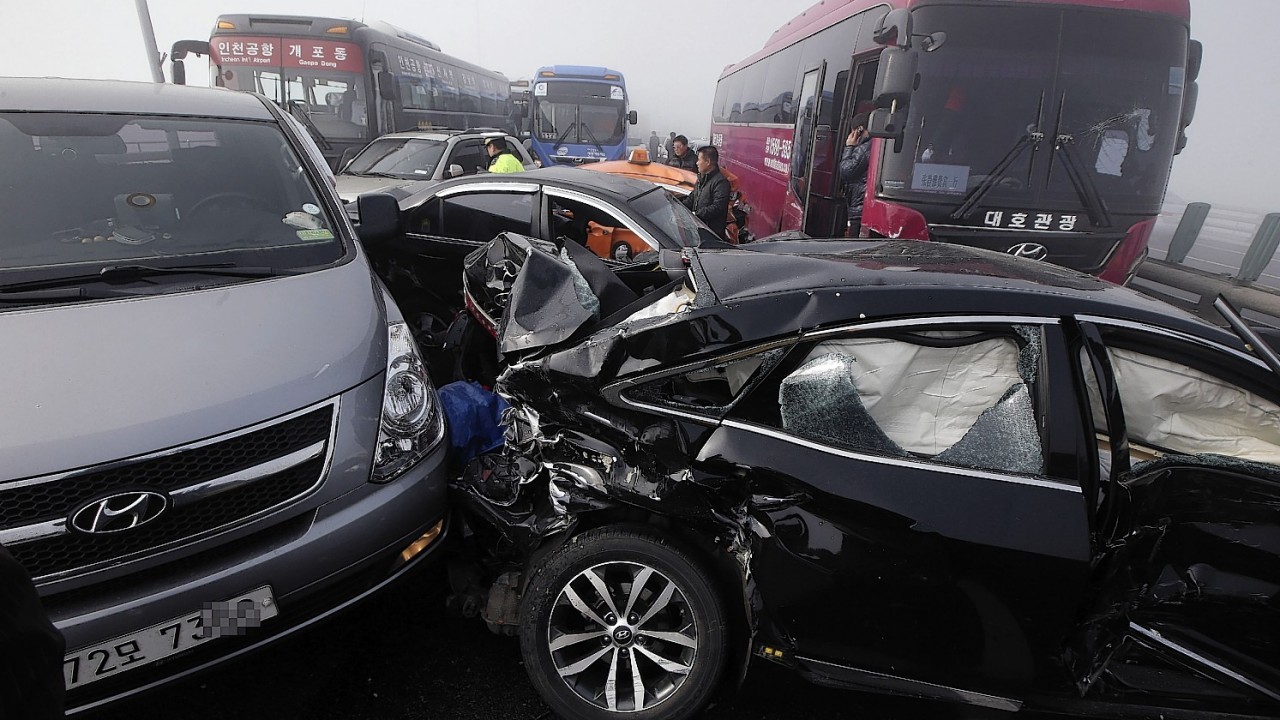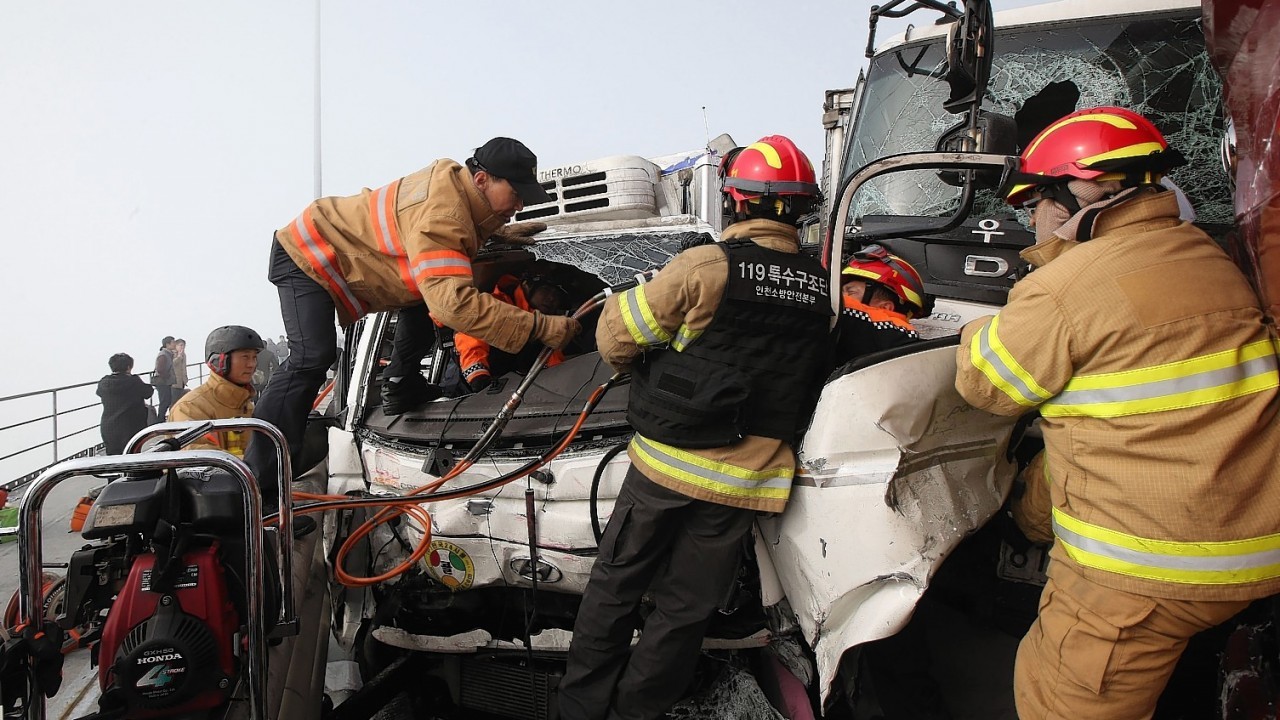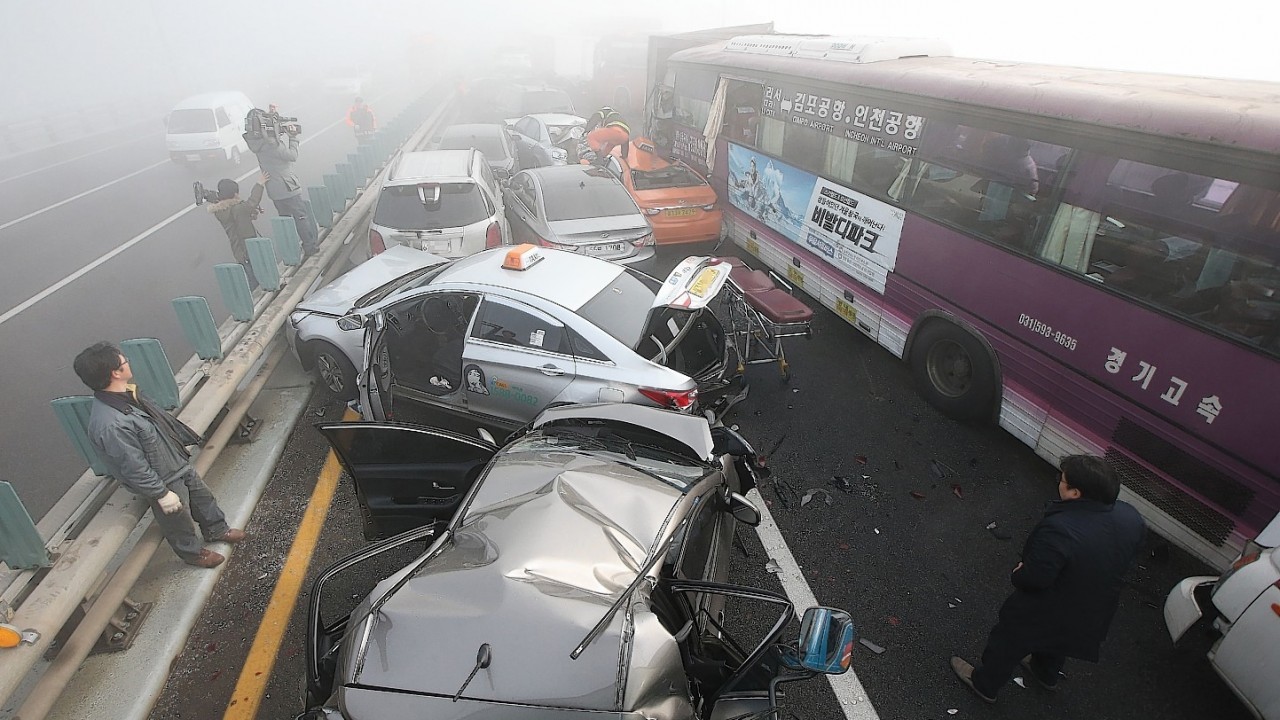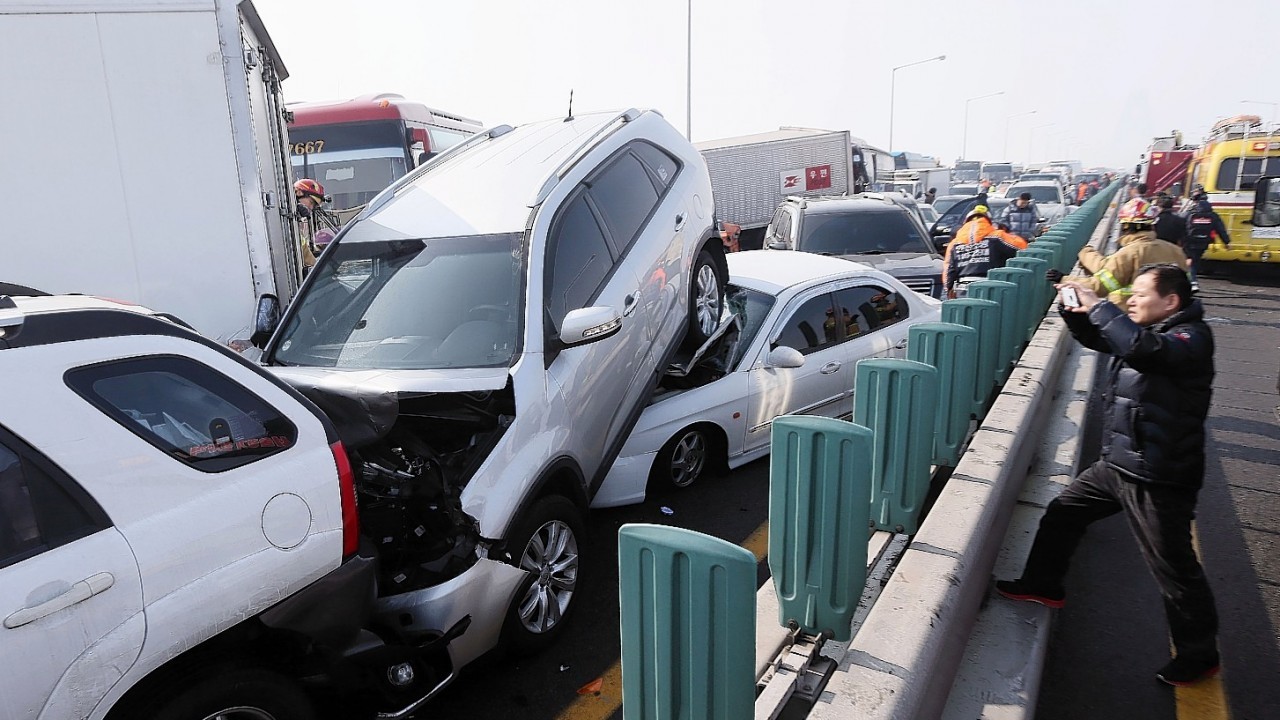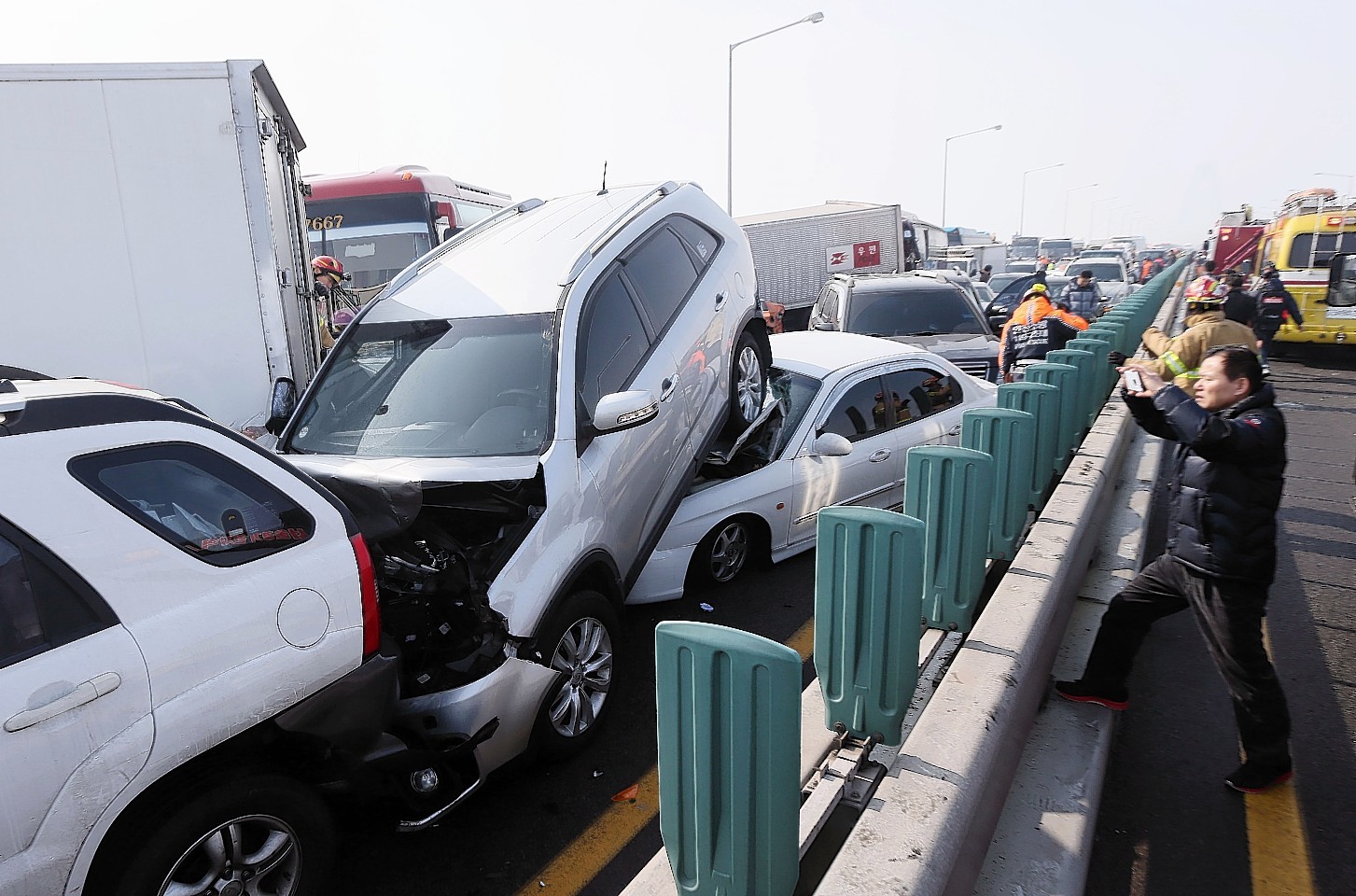Two people have been killed and more than 60 injured in a crash involving about 100 vehicles in foggy weather on a bridge near South Korea’s Incheon International Airport.
At least 65 people were injured, seven of them seriously hurt and Byeon Tae-u of the Incheon Fire and Safety Management Department said the number of the injured could increase.
Emergency workers removed the damaged cars on the 14,400ft Yeongjong Bridge on the main road from the airport to the capital Seoul.
The morning crash happened in a Seoul-bound lane and was probably aggravated by thick fog and icy road conditions, Mr Byeon said.
Lee Gyeong-hoon, 39, whose car was hit from behind,, said he was driving slowly because the fog prevented him from seeing much more than 10 yards ahead.
“I saw the brake lights of the car in front of me turn on and I stopped abruptly,” he said. He was able to open the door and escape to the side.
The fog delayed the departure of 18 flights and the arrival of seven flights during the morning, airport spokesman Cho Sang-hyun said.
South Korea experienced a similar accident in 2006 when a 29-car pile-up in foggy weather at another bridge left 11 people dead and more than 50 injured.
